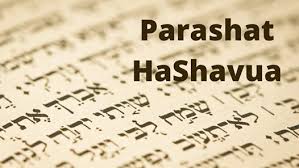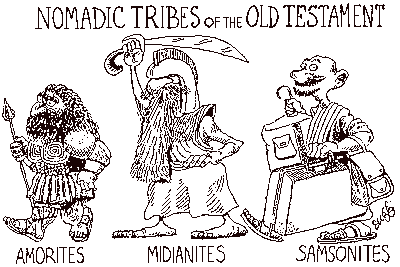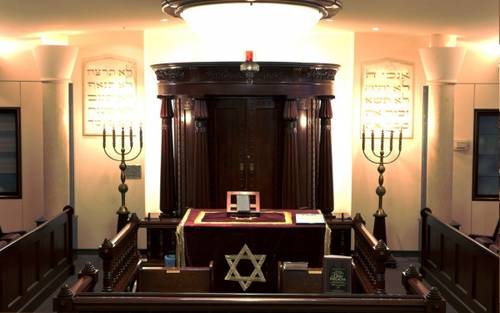Shemini Atzeret (שְׁמִינִי עֲצֶרֶת—"Eighth [day] of Assembly") is a Jewish holiday. It is celebrated on the 22nd day of the Hebrew month of Tishrei, usually coinciding with late-September or early-October. It directly follows the Jewish festival of Sukkot which is celebrated for seven days; thus Shemini Atzeret is literally the eighth day [of Assembly]. It is a separate — yet connected — holy day devoted to the spiritual aspects of the festival of Sukkot. Part of its duality as a holy day is that it is simultaneously considered to be both connected to Sukkot and a separate festival in its own right.
Outside the Land of Israel, this is further complicated by the additional day added to all Biblical holidays except Rosh Hashanah and Yom Kippur.[4] Shemini Atzeret is thus sometimes wrongly regarded as the eighth day of Sukkot outside the Land of Israel, leading to sometimes involved analysis as to which practices of each holiday are to apply.
The celebration of Simchat Torah is the most distinctive feature of the holiday, but it is a later rabbinical innovation. In the Land of Israel, the celebrations of Shemini Atzeret and Simchat Torah are combined on a single day, and the names are used interchangeably. In the Diaspora, the celebration of Simchat Torah is deferred to the second day of the holiday. Commonly, only the first day is referred to as Shemini Atzeret, while the second is called Simchat Torah.[5]
-Wikipedia

Bereshit- Priorities - Rabbi Eli Mansour
Commenting on the famous first words of the Torah – "Bereshit Bara Elokim" ("In the beginning, G-d created") – Rashi cites the Midrash which explains the word "Bereshit" to mean, "Bishbil Torah She’nikre’a ‘Reshit’" – "for the Torah, which is called ‘the first’." In other words, the phrase "Bereshit Bara Elokim" means that G-d created the world so that the Torah could be studied and observed. Torah and Misvot are not simply additional components to the world – they are the very purpose for which the world exists in the first place.
We see just how far this idea extends later in the story of creation. The Torah writes (1:14-15) that when G-d announced the creation of the luminaries – the sun, the moon and the stars – He declared, "Let there be luminaries in the firmament of the sky… They shall serve as signs and occasions, for days and for years, and they shall serve as luminaries in the firmament of the sky to illuminate the earth." Rashi explains that the luminaries serve as "signs" in the sense that when an eclipse occurs, this is an inauspicious omen which should motivate us to introspect and repent. The luminaries serve the function of "occasions, for days and for years," Rashi explains, in that we proclaim new months based on the moon’s revolution around the earth. This determination directly affects our halachic observance, as it establishes which days are to be celebrated as Yamim Tobim. The luminaries also determine the halachic times relevant for our daily schedule of Misvot.
Commenting on the next verse – "And they shall serve as luminaries…to illuminate the earth," Rashi writes, "And this [function], too, they shall serve – to illuminate the earth."
The Hafetz Haim (Rav Yisrael Meir Kagan of Radin, 1839-1933) notes the startling implication of Rashi’s comments – that illumination is only the secondary function of the sun and the moon. Their primary function is to facilitate our Misva observance, to enable us to determine the days when our holidays are to be celebrated, and to inspire repentance. Providing light and warmth is secondary – "This function, too, they shall serve…"
Another example of this concept can be found in the Gemara, in Masechet Berachot (41), discussing the famous verse in the Book of Debarim (8:8) which praises the Land of Israel for seven species of grains and fruits (wheat, barley, vines, figs, pomegranates, olives, dates). The land is blessed with these species, the Gemara explains, because they inform us of halachic "Shiurim" ("quantities"). For example, the size of an olive is the volume which constitutes a halachic act of "eating." The size of a large date is the amount of food whose consumption violates the Yom Kippur fast, rendering the transgressor liable to the punishment of "Karet." These foods are all tasty and nutritious, but this is only their secondary function. The primary purpose for which they were created is to establish Halachot, to help us observe the Torah – the purpose of all of existence.
This fundamental teaching should "rewire" our minds and force us to look upon the world, and our lives, from an entirely new perspective. If the universe was created solely for the purpose of Torah and Misvot, then our lives must revolve around Torah and Misvot. We are certainly allowed to enjoy the physical and material blessings of this world, but our primary focus must be directed toward the study and observance of Torah. Right away, in the very first words of the Torah, we are taught that this must be our highest priority. Although we involve ourselves in many different things, and we of course need to earn a livelihood and tend to our physical needs, we must remember that our primary point of focus and highest priority is always serving G-d through the study of Torah and performance of Misvot.

Shemini Atzeret – a Holiday in Its Own Right (from Peninei Halacha )
Simchat Torah & Hatanim
The Yom Tov of Shemini Atzeret is both a continuation of Sukkot and an independent festival. The fact that the Torah calls it the “eighth” (shemini) indicates that it is a continuation of the seven days of Sukkot. Likewise, with respect to the mitzvah to make a pilgrimage and offer an olat re’iya (pilgrimage burnt offering) and shalmei ḥagiga (festival peace-offering), it was deemed a continuation of Sukkot; one who ascended to the Temple and offered the requisite sacrifices on Sukkot did not need to offer them again on Shemini Atzeret, while one who did not offer the sacrifices on Sukkot could offer them on Shemini Atzeret (Rosh Ha-shana 4b).
On the other hand, in several respects, Shemini Atzeret is considered an independent festival. First, the special mitzvot of Sukkot do not pertain to it: There is no mitzvah to sit in the sukkah, to take the lulav and etrog, or to offer a water libation with the tamid offering. Therefore, it has a different name; it is not called Sukkot, but Shemini Atzeret in the prayers, kiddush, and Birkat Ha-mazon.
Second, the sacrifices offered on Shemini Atzeret in Temple times were different. On each day of Sukkot, fourteen lambs and two rams were offered, but on Shemini Atzeret, seven lambs and one ram were offered. On Sukkot, 13 bulls were offered on the first day, 12 on the second, and so forth until 7 bulls were offered on the seventh day. If Shemini Atzeret were a continuation of Sukkot, presumably 6 bulls would have been offered. In fact, only a single bull was offered, indicating that Shemini Atzeret is an independent festival (Bamidbar 29:32-39).
Since, in some ways, Shemini Atzeret is a holiday in its own right, we recite the berakha of She-heḥeyanu in kiddush at night; the She-heḥeyanu recited on the first night of Sukkot does not cover Shemini Atzeret (Sukka 47b).
The “Ḥatanim”:
There are three especially prestigious aliyot on Simḥat Torah, and the most important of all is the one that concludes the Torah. The person honored with this aliya is called the “Ḥatan Torah.” The next prestigious Aliya is called, “Ḥatan Me’ona,” as “me’ona” is the first word of this aliya.
Immediately after the Torah is concluded, another Torah scroll is brought out. Another person is called up, and the first verses of Bereishit are read. It is a great honor to receive this aliya, and the person who receives it is called the “Ḥatan Bereishit.”
This aliya expresses our devotion to Torah. When we finish reading the Torah, we do not bid it farewell, not even for a moment. Rather, we immediately begin it again.
After the Ḥatan Bereishit, a third Torah scroll is brought out, and the aliya of maftir is read. This reading is about the offerings of the festival as described in Parashat Pinḥas .
It is customary to read the beginning of Yehoshua as the haftarah. Since the entire objective of the Torah is for it to be fulfilled in Eretz Yisrael, after completing the Torah it is appropriate to begin Yehoshua, which is about “the value of Eretz Yisrael '' (see Nedarim 22b). Another reason to read Yehoshua at this point is because of its important verses about the value of Torah:
In many places, it is customary to sell these three prestigious aliyot to the largest donors to the synagogue and financial supporters of Torah scholars. Elsewhere, these aliyot are given to Torah scholars or community leaders. If choosing honorees is likely to cause conflict, because it is difficult to determine who is most deserving, it is better to sell the aliyot to the highest bidder. It is an added bonus if a buyer is also a Torah scholar or community leader (Kenesset Ha-gedola; Bikurei Yaakov 669:3). In some places, the wealthy buy these aliyot and then give them to Torah scholars. Their merit is great, as they both make a donation and honor the Torah.
Some have a custom that each person who receives an aliya pledges to make a donation to synagogue upkeep and Torah study (MB 669:7).
If one already had an aliya and then finds out that the congregation wishes to honor him as Ḥatan Torah, Ḥatan Me’ona, Ḥatan Bereishit, or maftir, he may accept this additional aliya, and there is no concern that he is making an unnecessary berakha. However, if one is honored as Ḥatan Torah, he should not receive the aliya of Ḥatan Bereishit as well, as it would be disrespectful toward the first Torah scroll; it would look as though he had to come back for an extra aliya because the first Torah scroll was found to be invalid (Eliya Rabba; Pri Megadim; Bikurei Yaakov 669:4; MB ad loc. 2). A kohen or Levite can be Ḥatan Torah or Ḥatan Bereishit (Maharil; Bikurei Yaakov 669:4).
Ashkenazic custom is to read three aliyot from Parashat Vezot Habracha on the night of Simḥat Torah, after the hakafot. Those who are called up recite the berakhot .
As we are continuing our Simcha for the next few days and most of this month is plenty of Chagim Baruch Hashem we will not recite tachanun until the next Rosh Chodesh.
Bevirkat Chag Sameach
Shabbat Shalom
David Azerad
CLICK ON PICTURE TO OPEN YOUTUBE LINK

3) HOLY JoKeS!!
Selection of funny snippets, loosely related to this weeks parashah, to brighten your day



















